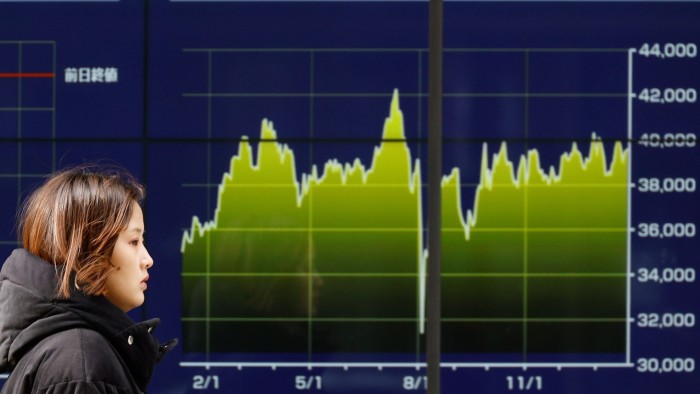Unlock the White House Watch newsletter for free
Your guide to what the 2024 US election means for Washington and the world
Stocks recovered part of their heavy losses on Monday and currency markets fluctuated as investors struggled to keep up with Donald Trump’s plans for sweeping tariffs on some of the US’s key trading partners.
The US president on Saturday imposed 25 per cent tariffs on imports from Mexico and Canada, a 10 per cent levy on Canadian energy and tariffs of 10 per cent on imports from China, sparking a heavy sell-off in global equities early in the trading day. He also threatened tariffs against the EU.
But markets staged a sharp rebound after Trump agreed to delay tariffs on Mexico by a month, following a call with Mexican President Claudia Sheinbaum on Monday.
The S&P 500, which had earlier fallen almost 2 per cent, traded 0.6 per cent lower midway through the New York trading session.
Investors said Trump’s apparent U-turn on Mexico underlined how difficult it was for markets to keep up with the fast-changing tariff plans.
“What is clear in this new environment is not to extrapolate knee-jerk reactions and moves,” said Guy Miller, chief market strategist at insurer Zurich.
European stocks also staged a partial recovery as investors rushed to assess the shifting likelihood of a fully fledged global trade war. The continent-wide Stoxx Europe 600 closed 0.9 per cent lower, bouncing back from steeper losses.
Currency markets also whipsawed. The Mexican peso, which was earlier down as much as 3 per cent against the dollar, rebounded to trade slightly higher on the day. The Canadian dollar also trimmed its declines to trade at C$1.459 against the greenback.

The US dollar was up 0.6 per cent against a basket of rivals having earlier gained more than 1 per cent.
“My head hurts,” said one FX trader at a large European bank. “It’s almost impossible to trade, there’s too much [news] to process. Buy. No wait, sell. No, actually buy. [Or] just give up,” the person added.
Global investment banks warned that the tariffs would hit the US economy alongside the rest of the world. Analysts at UBS and Morgan Stanley forecast that if the tariffs were sustained, they could halve US real GDP growth this year — reducing it by more than 1 percentage point.
The US 10-year Treasury yield was down 0.04 percentage points to 4.53 per cent as investors bought up safe assets. Yields fall when prices rise.
But economists have also warned that the tariffs are likely to accelerate inflation in the US, deterring the Federal Reserve from interest rate cuts and boosting the dollar.
“The clearest implication is a stronger dollar,” said Eric Winograd, chief economist at AllianceBernstein. “A long dollar position is the cleanest, clearest expression of the trade war that is now being launched.”
Earlier in Asia, Japan’s export-heavy Nikkei 225 closed down 2.7 per cent. After falling in early trading, Hong Kong’s Hang Seng index erased its losses to close flat. Mainland China’s stock market is closed until Wednesday.
China’s offshore renminbi, which trades freely, slid as much as 0.7 per cent to Rmb7.37 a dollar on Monday morning before paring back its losses to 7.33.
Other commodities that are treated as proxies for Chinese and global economic growth fell. LME copper fell 0.7 per cent to $9,064 per tonne, while nickel and aluminium both fell more than 1 per cent.
Crypto markets also plunged as traders pared back exposure to riskier assets. Ethereum, the second-largest coin, fell as much as 27 per cent. Bitcoin was down 3.4 per cent to $98,648 per coin.
George Saravelos, at Deutsche Bank, said the tariff announcements were “at the most hawkish end of the protectionist spectrum we could have envisaged”, and that markets needed to “structurally and significantly reprice the trade war risk premium”.















